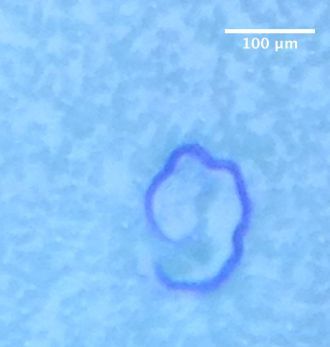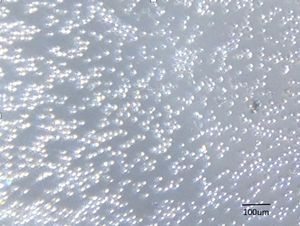South East Asia Blood Smear: Brugia malayi (ID #1) #BIOE301C
 May 24, 2018 • 7:36 PM UTC
May 24, 2018 • 7:36 PM UTC Unknown Location
Unknown Location 140x Magnification
140x Magnification Unknown
Unknown
lnardac1
Learn about the author...
2posts
0comments
1locations

The sample provided was a stained human blood sample from Southeast Asia. Scanning through the sample, we were able to find multiple worm specimens. We were able to capture a few in focus photos. Based on the size and shape, we identified the worms to be a type of nematode and specifically a filarial parasite. There are six different types of filarial parasites and based on the geographical distribution of these species we hypothesized that the specimens were likely Brugia malayi which are found in Southeast Asia and the Indian subcontinent. In addition, the specimens demonstrated the tapered tail and long head space that is characteristic of Brugia malayi and had an approximate length (250 um) and width (7 um) which agreed with dimensions reported for Brugia malayi . We counted about 15 parasites in the sample. This concentration of parasites certainly suggest that the patient was infected and would require treatment. Brugia malayi is a causative agent of lymphatic filariasis, an infection disease that results in the severe swelling of lower limbs. Antibiotic doxycycline is able to effectively treat lymphatic filariasis. Figure 1 shows the photo taken of our sample. The photo taken of the sample also shows white blood cells. These cells are generally about 15 micrometers. Thus the measurement of one cell was used to calibrate the size scale, and a scale bar was generated using ImageJ.

Sign in to commentNobody has commented yet... Share your thoughts with the author and start the discussion!

 0 Applause
0 Applause 0 Comments
0 Comments